Organizational Behavior Report: Analysis of Susan Taylor Case Study
VerifiedAdded on 2023/01/11
|21
|1930
|81
Report
AI Summary
This report examines the Susan Taylor case study, focusing on organizational behavior issues encountered by Susan in her new role as a production controller. It identifies key problems such as lack of coordination, motivation, and poor productivity, and explores relevant organizational behavior theories including POSDCORB, Scientific Management, Expectancy Theory, Herzberg’s Two-Factor Theory, Total Quality Management, and Lean Manufacturing. The report applies these theories to the case, offering recommendations such as team-building exercises, job rotation, and the implementation of total quality management and lean manufacturing. The conclusion emphasizes the impact of organizational behavior on individual and company performance, highlighting the importance of addressing employee needs and implementing effective management strategies for enhanced productivity and employee satisfaction. The report uses various references from books and journals to support its findings.
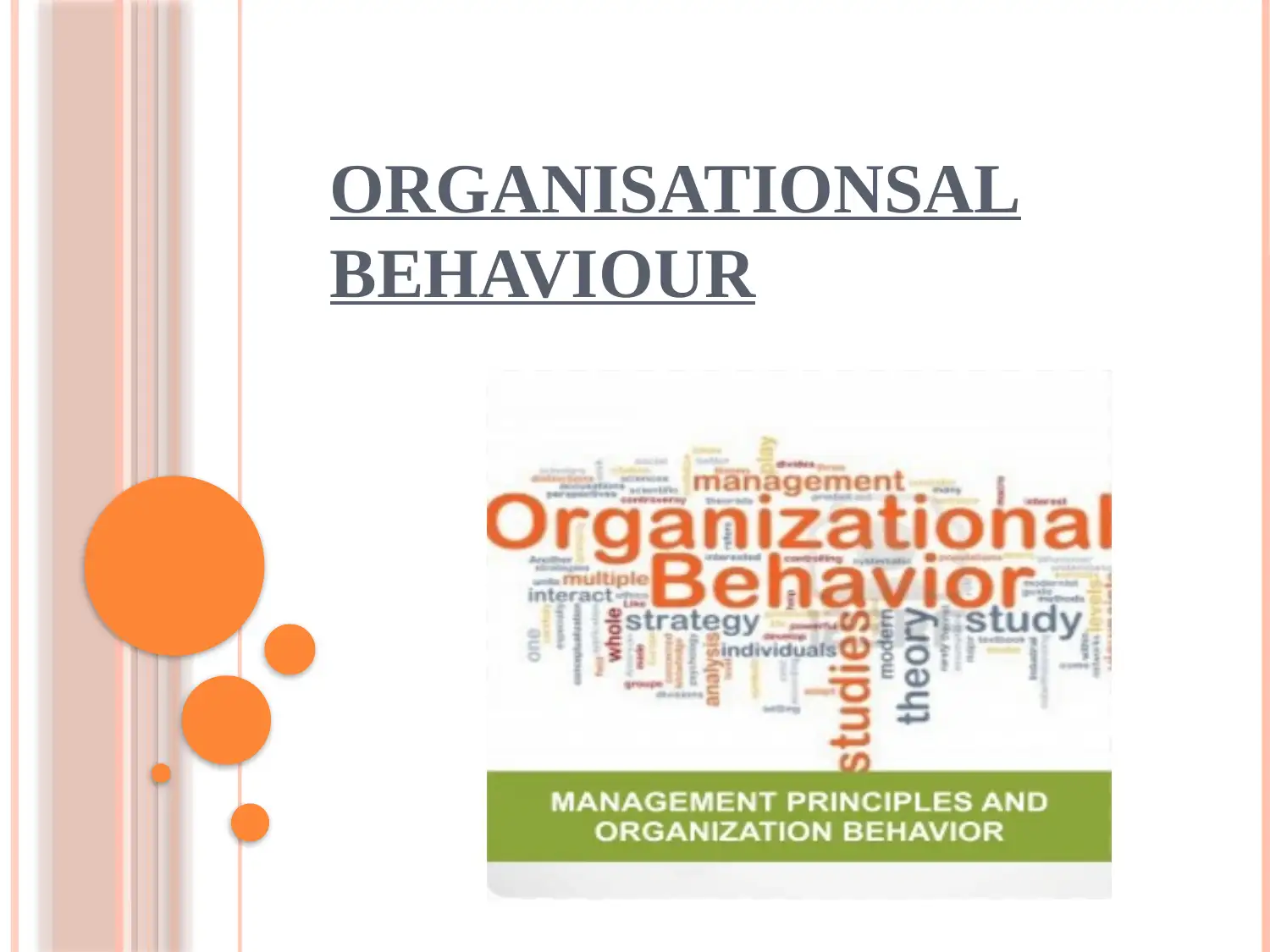
ORGANISATIONSAL
BEHAVIOUR
BEHAVIOUR
Paraphrase This Document
Need a fresh take? Get an instant paraphrase of this document with our AI Paraphraser
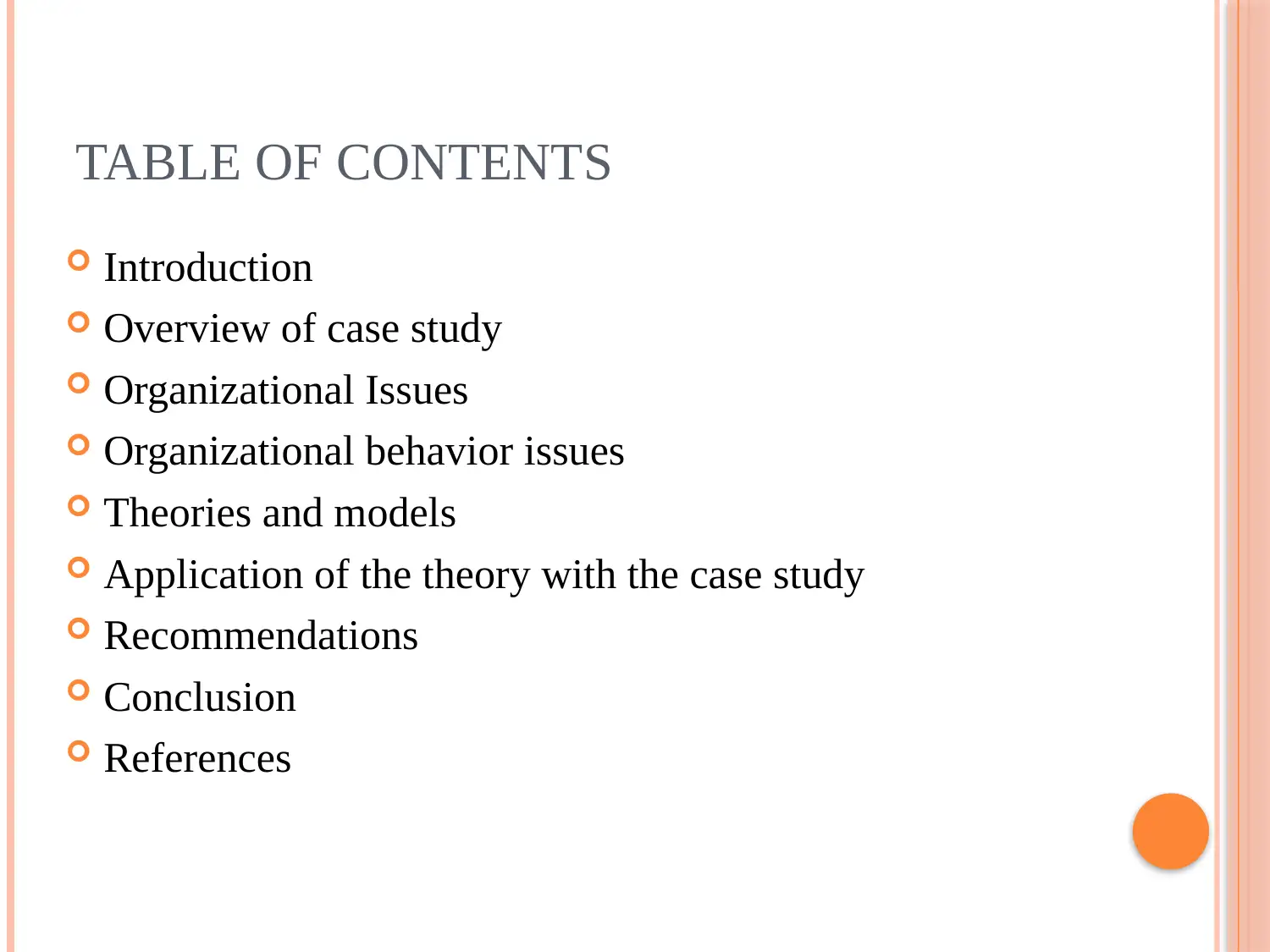
TABLE OF CONTENTS
Introduction
Overview of case study
Organizational Issues
Organizational behavior issues
Theories and models
Application of the theory with the case study
Recommendations
Conclusion
References
Introduction
Overview of case study
Organizational Issues
Organizational behavior issues
Theories and models
Application of the theory with the case study
Recommendations
Conclusion
References
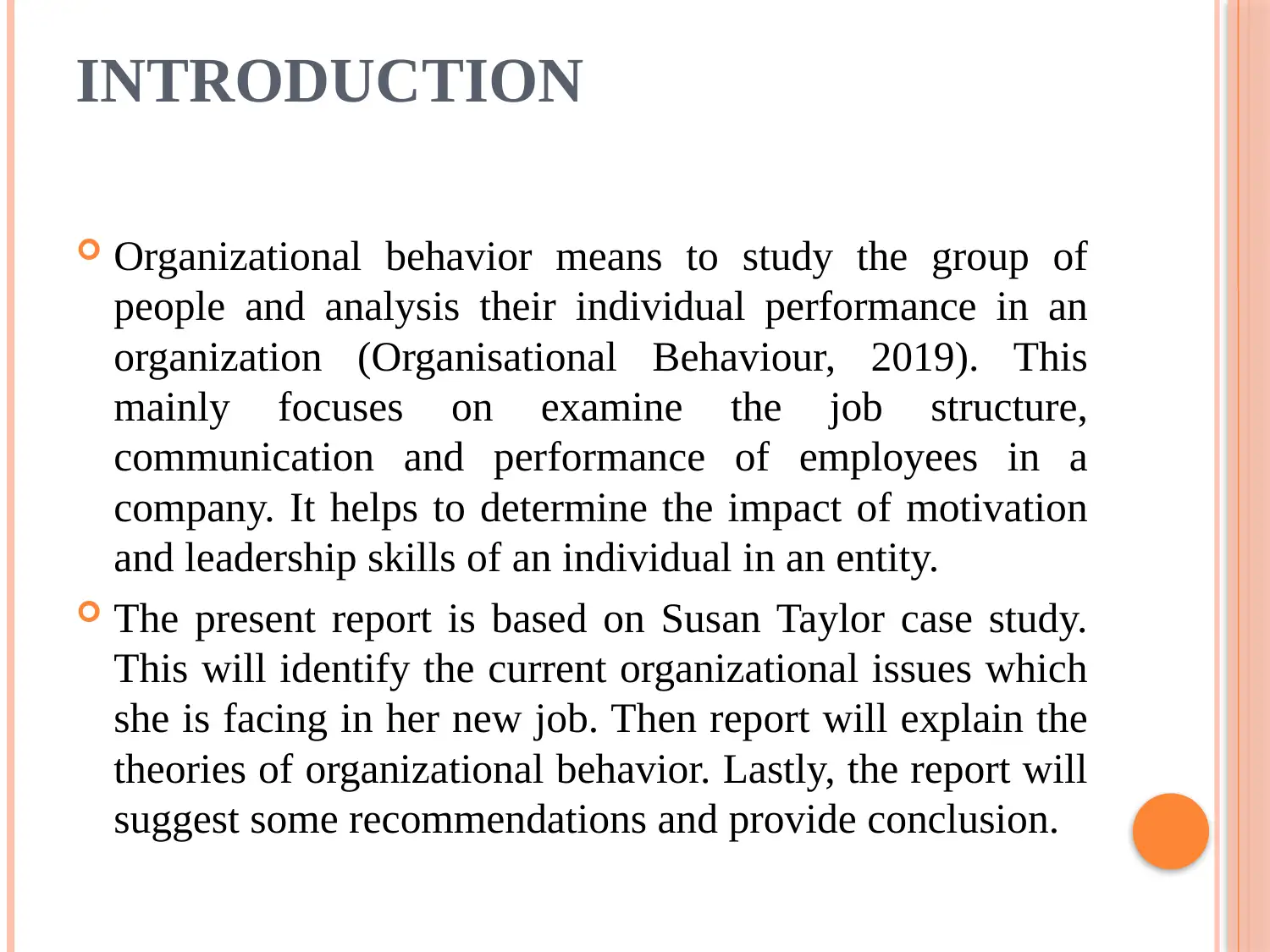
INTRODUCTION
Organizational behavior means to study the group of
people and analysis their individual performance in an
organization (Organisational Behaviour, 2019). This
mainly focuses on examine the job structure,
communication and performance of employees in a
company. It helps to determine the impact of motivation
and leadership skills of an individual in an entity.
The present report is based on Susan Taylor case study.
This will identify the current organizational issues which
she is facing in her new job. Then report will explain the
theories of organizational behavior. Lastly, the report will
suggest some recommendations and provide conclusion.
Organizational behavior means to study the group of
people and analysis their individual performance in an
organization (Organisational Behaviour, 2019). This
mainly focuses on examine the job structure,
communication and performance of employees in a
company. It helps to determine the impact of motivation
and leadership skills of an individual in an entity.
The present report is based on Susan Taylor case study.
This will identify the current organizational issues which
she is facing in her new job. Then report will explain the
theories of organizational behavior. Lastly, the report will
suggest some recommendations and provide conclusion.
⊘ This is a preview!⊘
Do you want full access?
Subscribe today to unlock all pages.

Trusted by 1+ million students worldwide
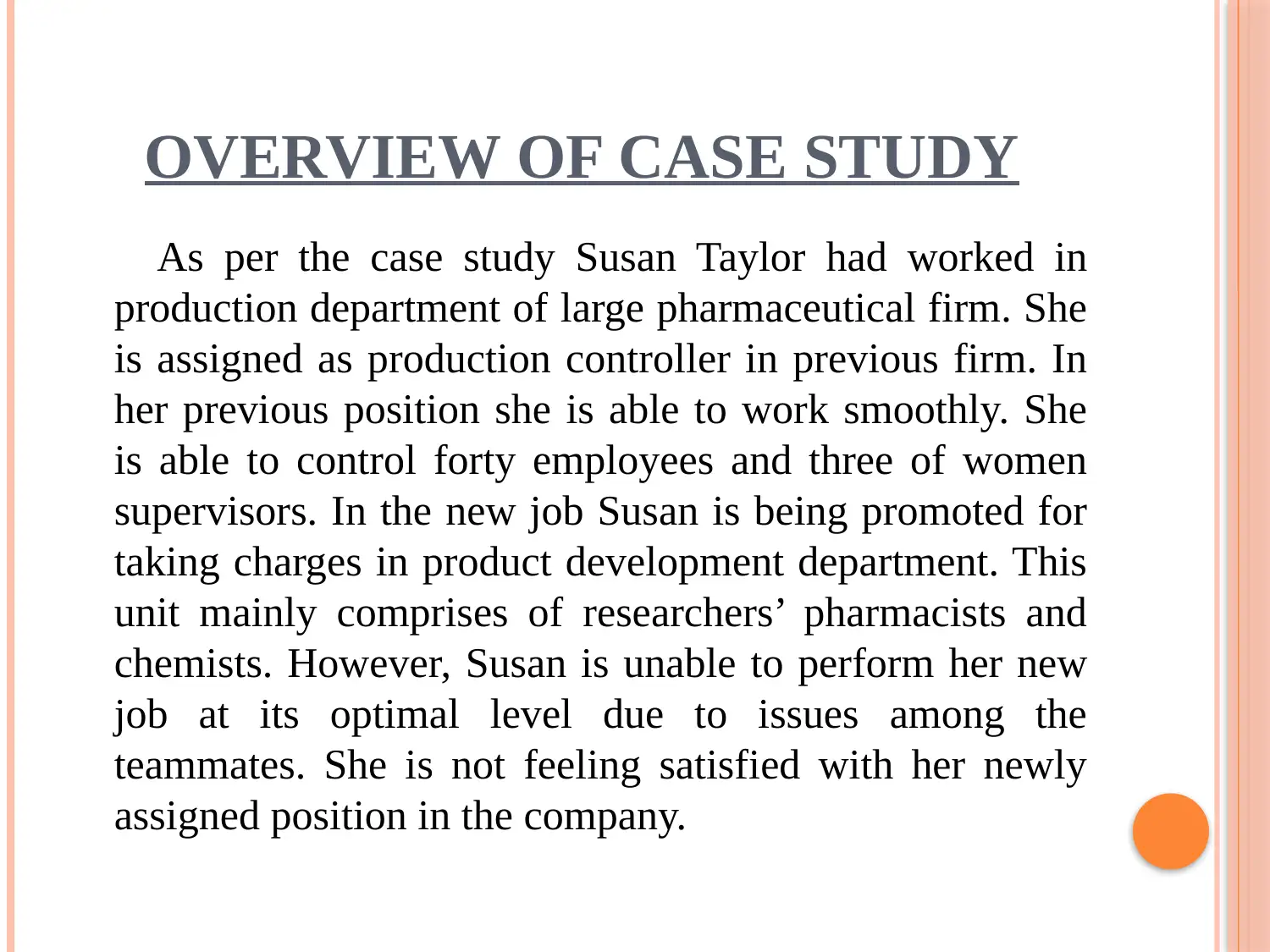
OVERVIEW OF CASE STUDY
As per the case study Susan Taylor had worked in
production department of large pharmaceutical firm. She
is assigned as production controller in previous firm. In
her previous position she is able to work smoothly. She
is able to control forty employees and three of women
supervisors. In the new job Susan is being promoted for
taking charges in product development department. This
unit mainly comprises of researchers’ pharmacists and
chemists. However, Susan is unable to perform her new
job at its optimal level due to issues among the
teammates. She is not feeling satisfied with her newly
assigned position in the company.
As per the case study Susan Taylor had worked in
production department of large pharmaceutical firm. She
is assigned as production controller in previous firm. In
her previous position she is able to work smoothly. She
is able to control forty employees and three of women
supervisors. In the new job Susan is being promoted for
taking charges in product development department. This
unit mainly comprises of researchers’ pharmacists and
chemists. However, Susan is unable to perform her new
job at its optimal level due to issues among the
teammates. She is not feeling satisfied with her newly
assigned position in the company.
Paraphrase This Document
Need a fresh take? Get an instant paraphrase of this document with our AI Paraphraser
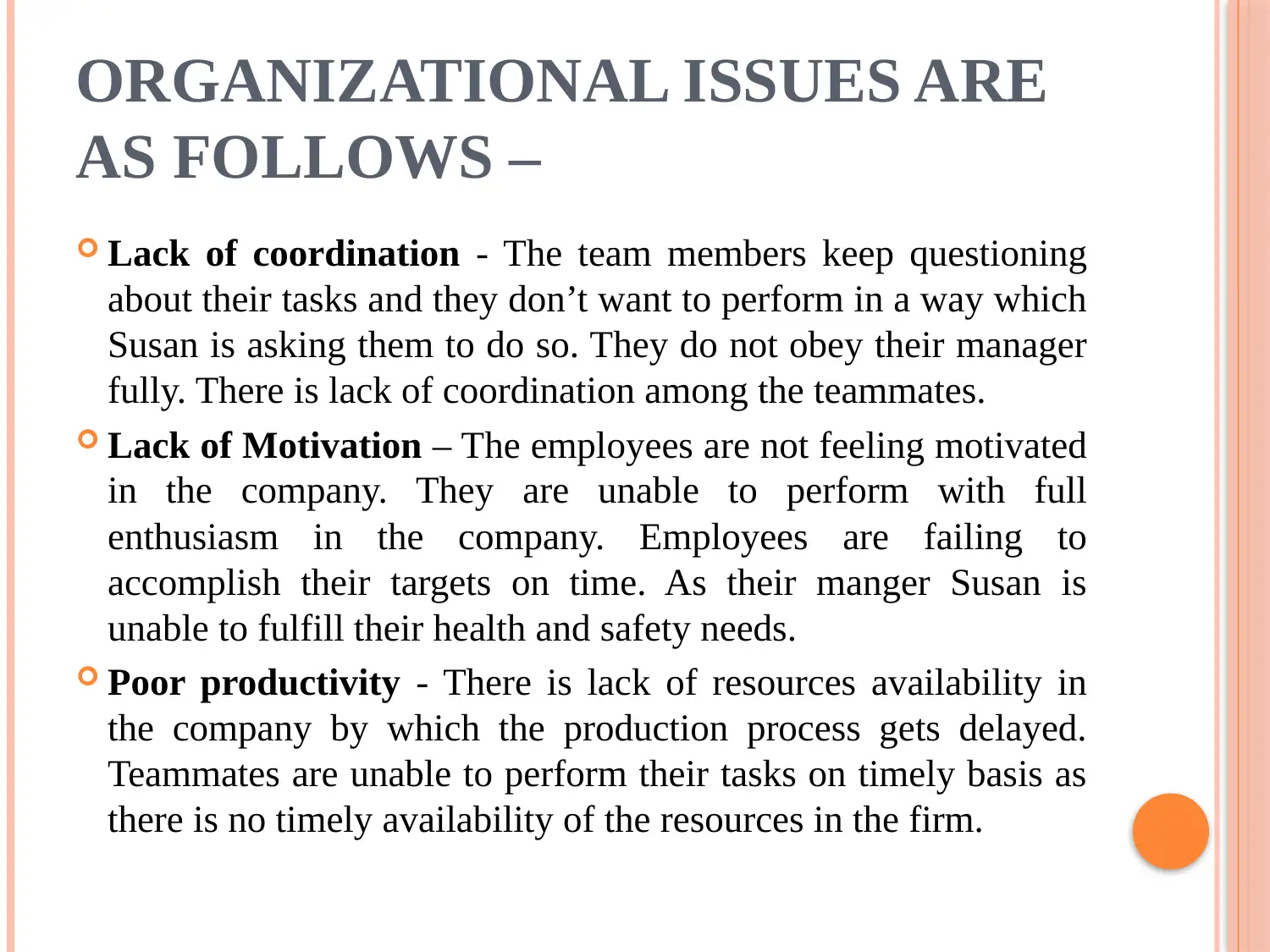
ORGANIZATIONAL ISSUES ARE
AS FOLLOWS –
Lack of coordination - The team members keep questioning
about their tasks and they don’t want to perform in a way which
Susan is asking them to do so. They do not obey their manager
fully. There is lack of coordination among the teammates.
Lack of Motivation – The employees are not feeling motivated
in the company. They are unable to perform with full
enthusiasm in the company. Employees are failing to
accomplish their targets on time. As their manger Susan is
unable to fulfill their health and safety needs.
Poor productivity - There is lack of resources availability in
the company by which the production process gets delayed.
Teammates are unable to perform their tasks on timely basis as
there is no timely availability of the resources in the firm.
AS FOLLOWS –
Lack of coordination - The team members keep questioning
about their tasks and they don’t want to perform in a way which
Susan is asking them to do so. They do not obey their manager
fully. There is lack of coordination among the teammates.
Lack of Motivation – The employees are not feeling motivated
in the company. They are unable to perform with full
enthusiasm in the company. Employees are failing to
accomplish their targets on time. As their manger Susan is
unable to fulfill their health and safety needs.
Poor productivity - There is lack of resources availability in
the company by which the production process gets delayed.
Teammates are unable to perform their tasks on timely basis as
there is no timely availability of the resources in the firm.
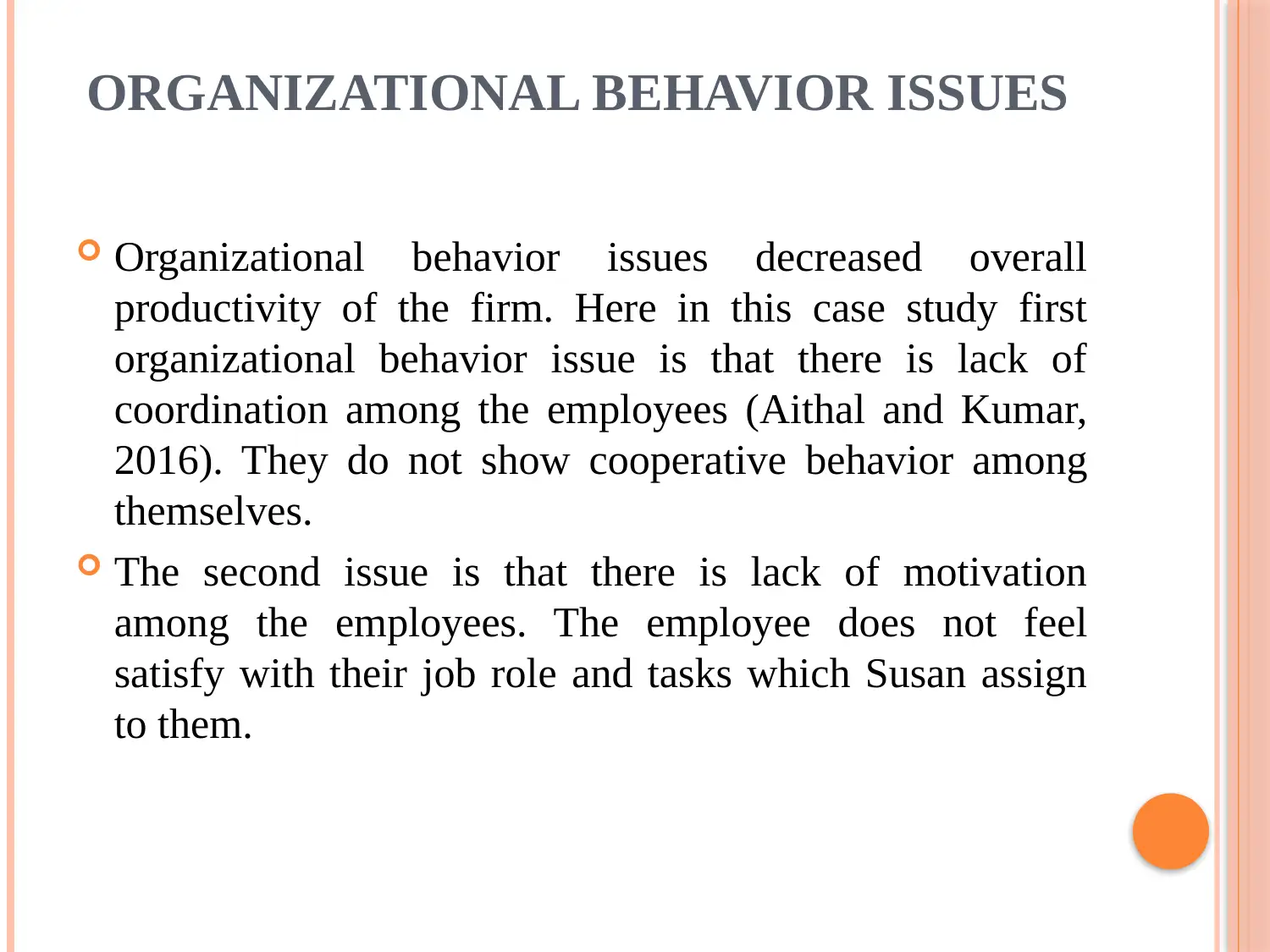
ORGANIZATIONAL BEHAVIOR ISSUES
Organizational behavior issues decreased overall
productivity of the firm. Here in this case study first
organizational behavior issue is that there is lack of
coordination among the employees (Aithal and Kumar,
2016). They do not show cooperative behavior among
themselves.
The second issue is that there is lack of motivation
among the employees. The employee does not feel
satisfy with their job role and tasks which Susan assign
to them.
Organizational behavior issues decreased overall
productivity of the firm. Here in this case study first
organizational behavior issue is that there is lack of
coordination among the employees (Aithal and Kumar,
2016). They do not show cooperative behavior among
themselves.
The second issue is that there is lack of motivation
among the employees. The employee does not feel
satisfy with their job role and tasks which Susan assign
to them.
⊘ This is a preview!⊘
Do you want full access?
Subscribe today to unlock all pages.

Trusted by 1+ million students worldwide
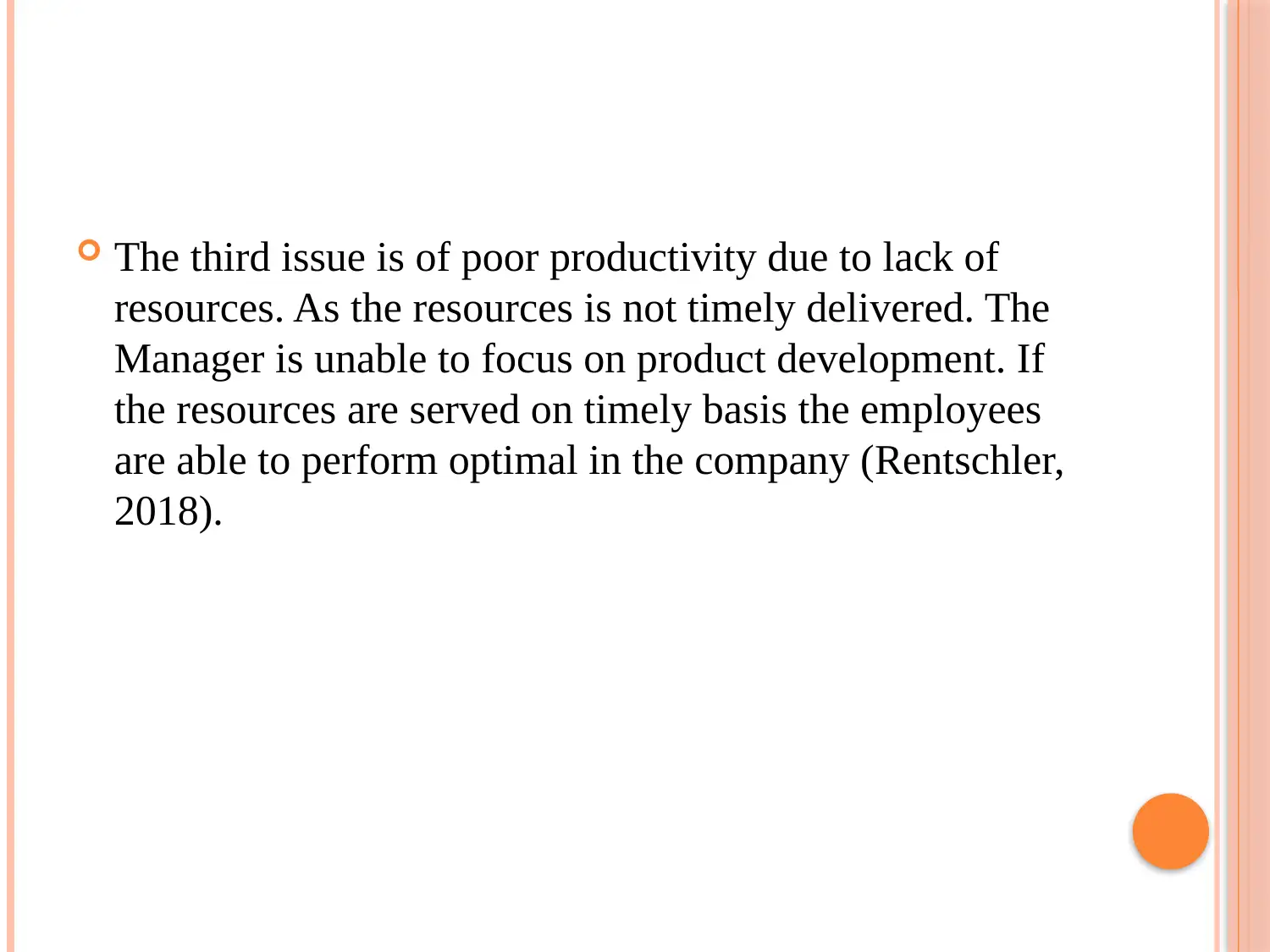
The third issue is of poor productivity due to lack of
resources. As the resources is not timely delivered. The
Manager is unable to focus on product development. If
the resources are served on timely basis the employees
are able to perform optimal in the company (Rentschler,
2018).
resources. As the resources is not timely delivered. The
Manager is unable to focus on product development. If
the resources are served on timely basis the employees
are able to perform optimal in the company (Rentschler,
2018).
Paraphrase This Document
Need a fresh take? Get an instant paraphrase of this document with our AI Paraphraser
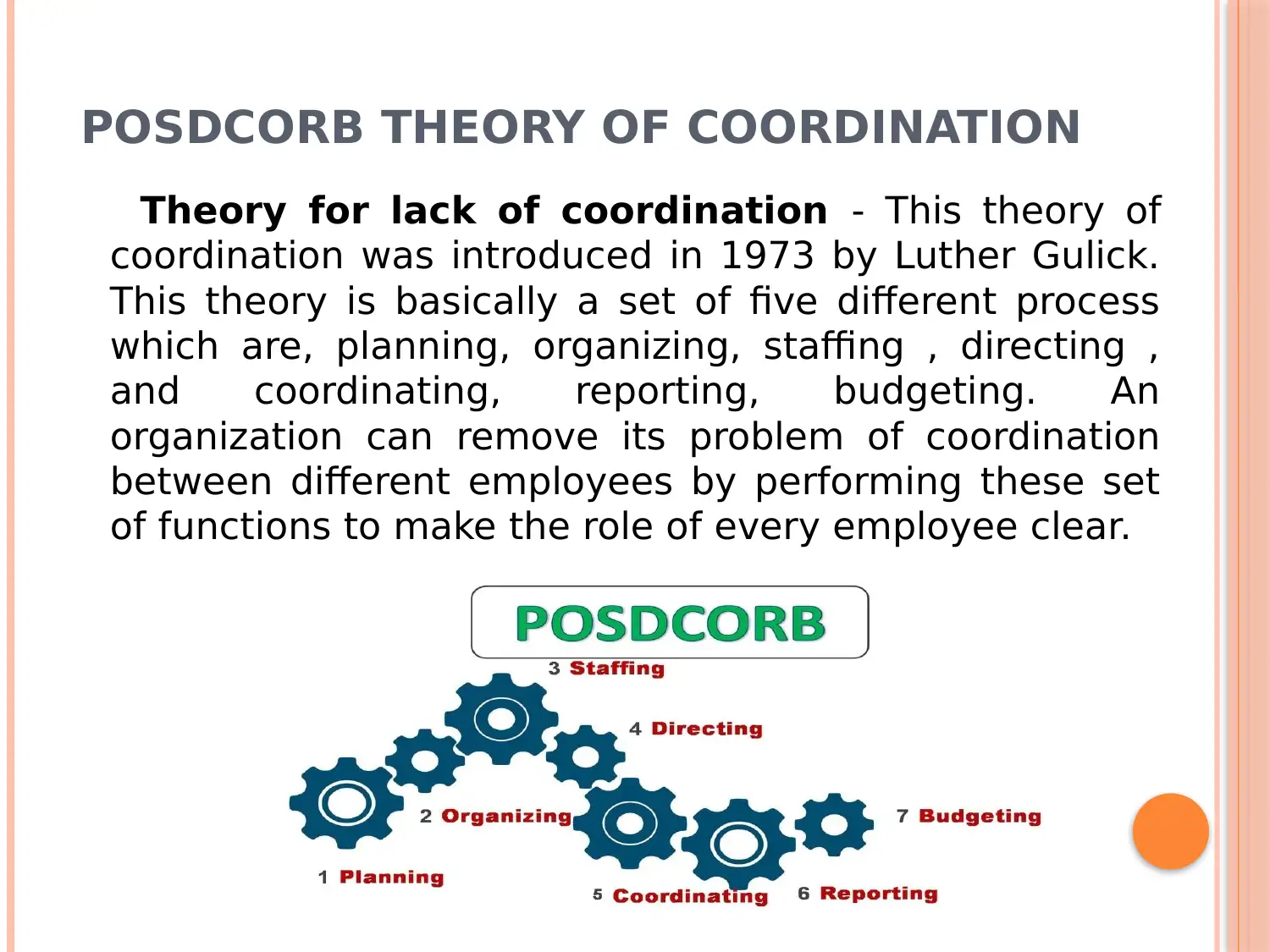
POSDCORB THEORY OF COORDINATION
Theory for lack of coordination - This theory of
coordination was introduced in 1973 by Luther Gulick.
This theory is basically a set of five different process
which are, planning, organizing, staffing , directing ,
and coordinating, reporting, budgeting. An
organization can remove its problem of coordination
between different employees by performing these set
of functions to make the role of every employee clear.
Theory for lack of coordination - This theory of
coordination was introduced in 1973 by Luther Gulick.
This theory is basically a set of five different process
which are, planning, organizing, staffing , directing ,
and coordinating, reporting, budgeting. An
organization can remove its problem of coordination
between different employees by performing these set
of functions to make the role of every employee clear.
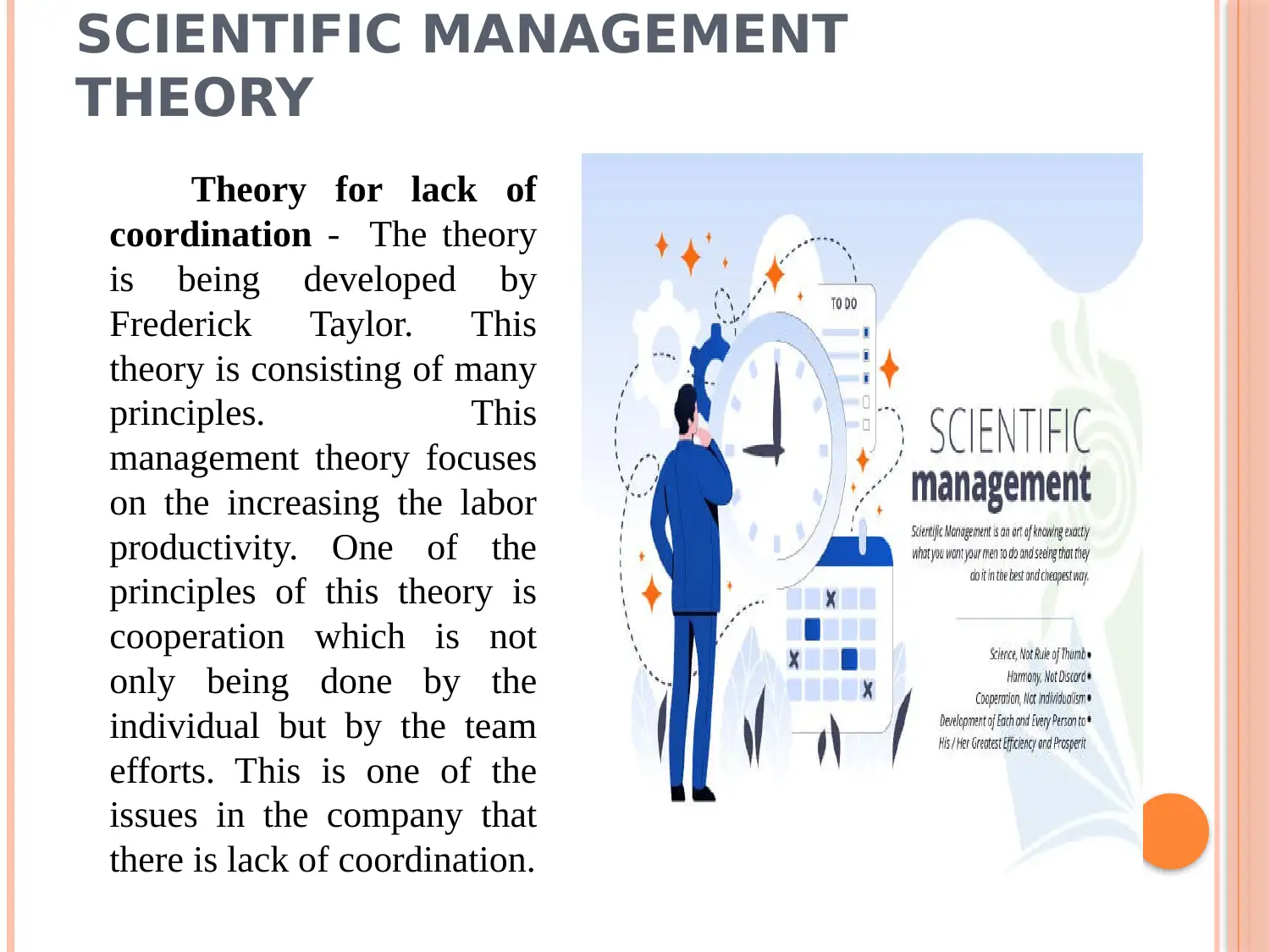
SCIENTIFIC MANAGEMENT
THEORY
Theory for lack of
coordination - The theory
is being developed by
Frederick Taylor. This
theory is consisting of many
principles. This
management theory focuses
on the increasing the labor
productivity. One of the
principles of this theory is
cooperation which is not
only being done by the
individual but by the team
efforts. This is one of the
issues in the company that
there is lack of coordination.
THEORY
Theory for lack of
coordination - The theory
is being developed by
Frederick Taylor. This
theory is consisting of many
principles. This
management theory focuses
on the increasing the labor
productivity. One of the
principles of this theory is
cooperation which is not
only being done by the
individual but by the team
efforts. This is one of the
issues in the company that
there is lack of coordination.
⊘ This is a preview!⊘
Do you want full access?
Subscribe today to unlock all pages.

Trusted by 1+ million students worldwide
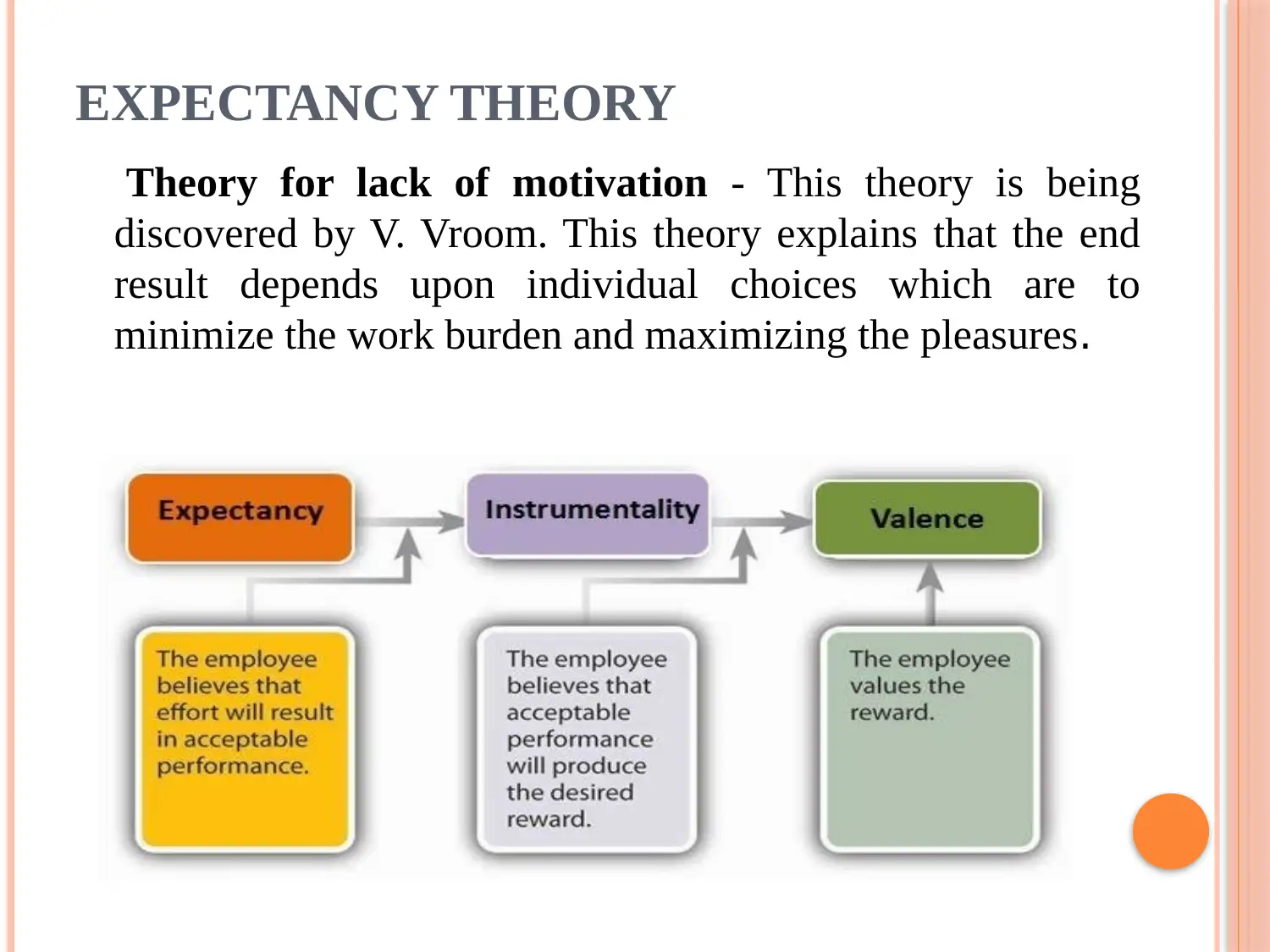
EXPECTANCY THEORY
Theory for lack of motivation - This theory is being
discovered by V. Vroom. This theory explains that the end
result depends upon individual choices which are to
minimize the work burden and maximizing the pleasures.
Theory for lack of motivation - This theory is being
discovered by V. Vroom. This theory explains that the end
result depends upon individual choices which are to
minimize the work burden and maximizing the pleasures.
Paraphrase This Document
Need a fresh take? Get an instant paraphrase of this document with our AI Paraphraser
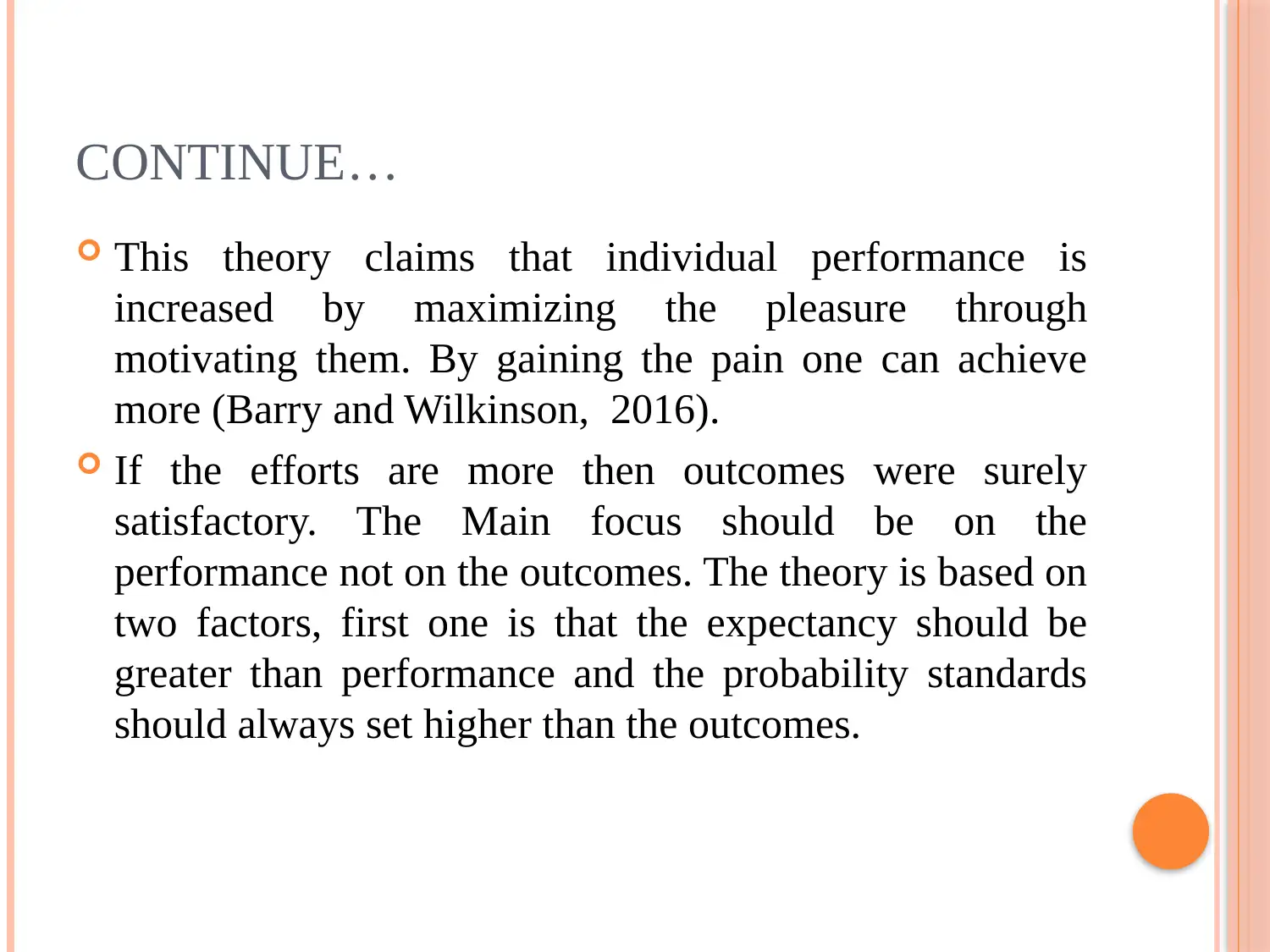
CONTINUE…
This theory claims that individual performance is
increased by maximizing the pleasure through
motivating them. By gaining the pain one can achieve
more (Barry and Wilkinson, 2016).
If the efforts are more then outcomes were surely
satisfactory. The Main focus should be on the
performance not on the outcomes. The theory is based on
two factors, first one is that the expectancy should be
greater than performance and the probability standards
should always set higher than the outcomes.
This theory claims that individual performance is
increased by maximizing the pleasure through
motivating them. By gaining the pain one can achieve
more (Barry and Wilkinson, 2016).
If the efforts are more then outcomes were surely
satisfactory. The Main focus should be on the
performance not on the outcomes. The theory is based on
two factors, first one is that the expectancy should be
greater than performance and the probability standards
should always set higher than the outcomes.
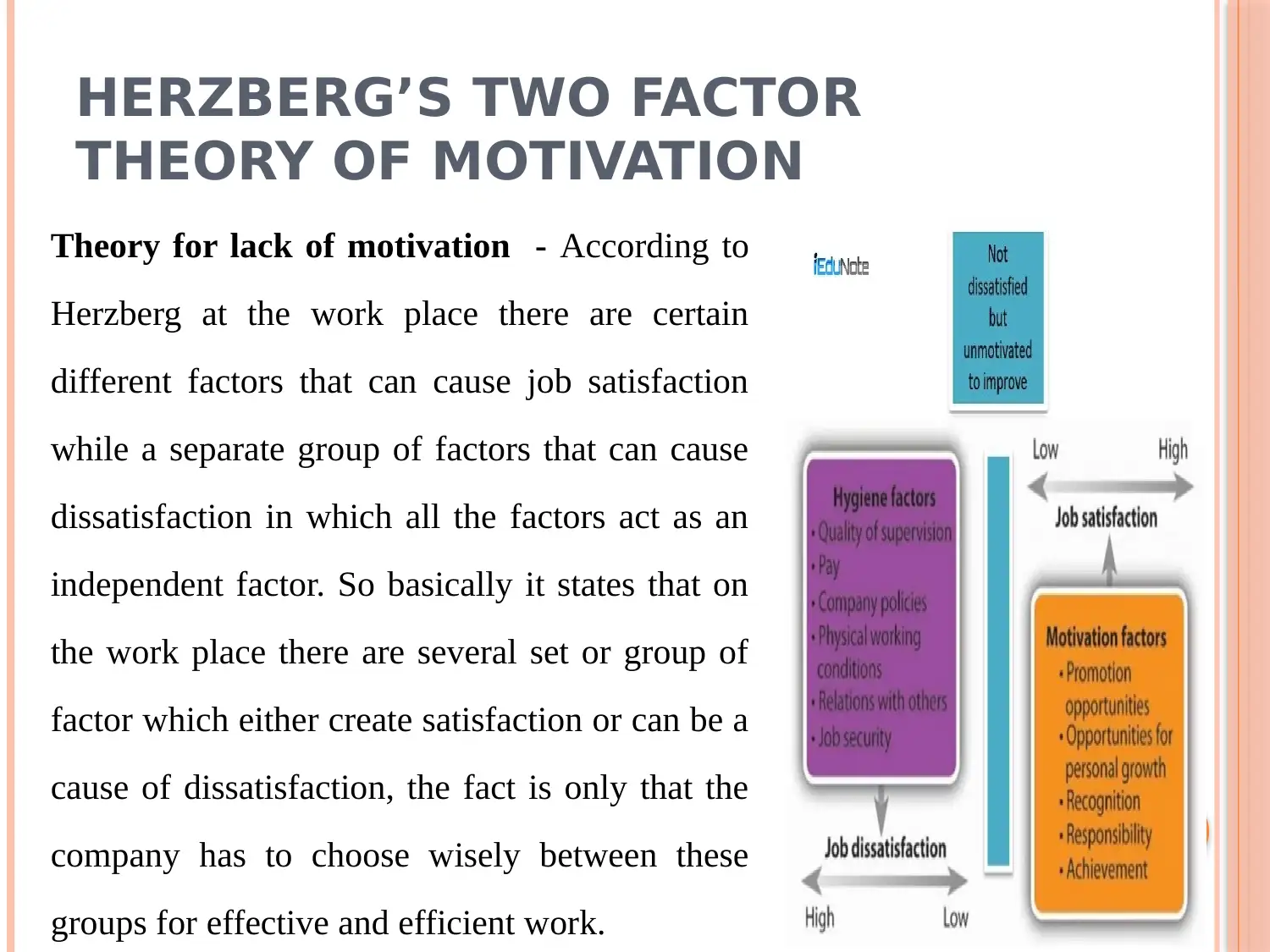
HERZBERG’S TWO FACTOR
THEORY OF MOTIVATION
Theory for lack of motivation - According to
Herzberg at the work place there are certain
different factors that can cause job satisfaction
while a separate group of factors that can cause
dissatisfaction in which all the factors act as an
independent factor. So basically it states that on
the work place there are several set or group of
factor which either create satisfaction or can be a
cause of dissatisfaction, the fact is only that the
company has to choose wisely between these
groups for effective and efficient work.
THEORY OF MOTIVATION
Theory for lack of motivation - According to
Herzberg at the work place there are certain
different factors that can cause job satisfaction
while a separate group of factors that can cause
dissatisfaction in which all the factors act as an
independent factor. So basically it states that on
the work place there are several set or group of
factor which either create satisfaction or can be a
cause of dissatisfaction, the fact is only that the
company has to choose wisely between these
groups for effective and efficient work.
⊘ This is a preview!⊘
Do you want full access?
Subscribe today to unlock all pages.

Trusted by 1+ million students worldwide
1 out of 21
Related Documents
Your All-in-One AI-Powered Toolkit for Academic Success.
+13062052269
info@desklib.com
Available 24*7 on WhatsApp / Email
![[object Object]](/_next/static/media/star-bottom.7253800d.svg)
Unlock your academic potential
Copyright © 2020–2025 A2Z Services. All Rights Reserved. Developed and managed by ZUCOL.





